#Laguna province
Text
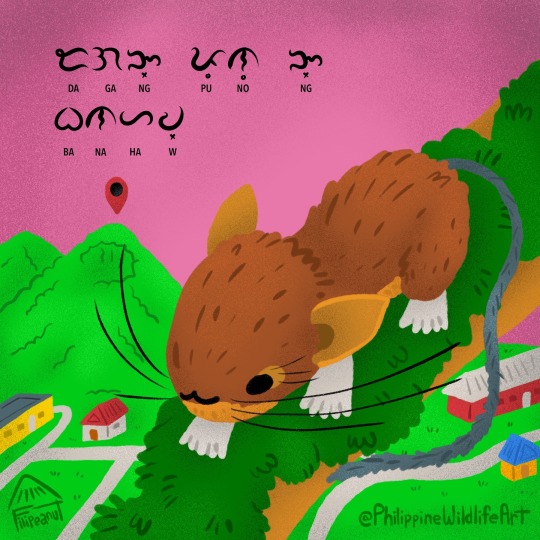
Mice and rats tend to be seen as dirty pests, but did you know that our country has a cute native mouse that lives only in certain forests? If you love trees, you’ll also love the tree-mouse… the Mt. Banahaw Tree-mouse!
Unlike Mickey Mouse, the Mt. Banahaw Tree-mouse is much, much older, and exists in real life. It has orange-brown fur, and super long whiskers that help it feel around trees and vines at night.
It is one of 5 species found ONLY on Mt. Banahaw and nowhere else in the world. This is more local endemics on one mountain then there are in many countries!
Cloud rat art prints:
https://society6.com/philippinewildlifeart/collection/cloud-rats-of-the-philippines-5848802
46 notes
·
View notes
Text
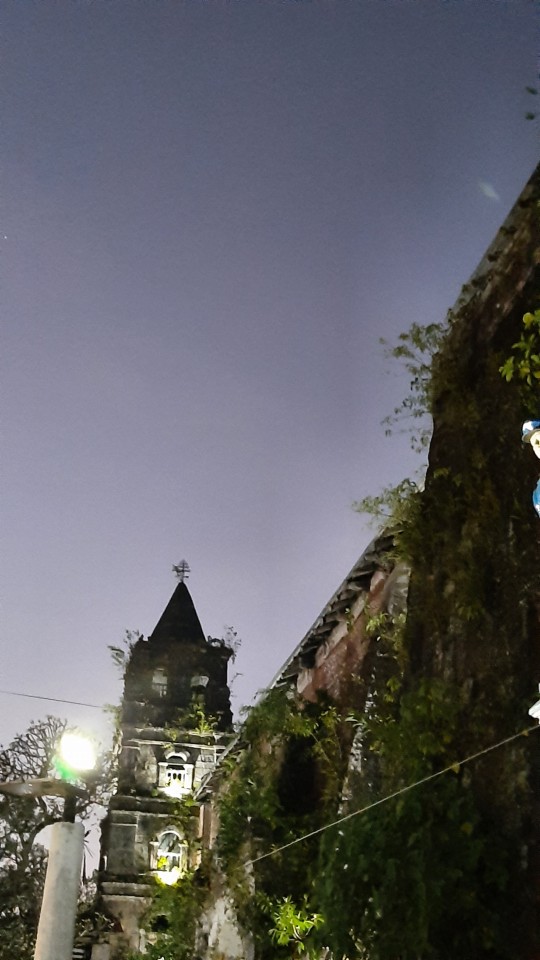
#photography#catholic#holy week#maundy thursday#st. gregory the great parish majayjay laguna#majayjay#lagunaph#home province#visita iglesia 2023#pacf
2 notes
·
View notes
Text
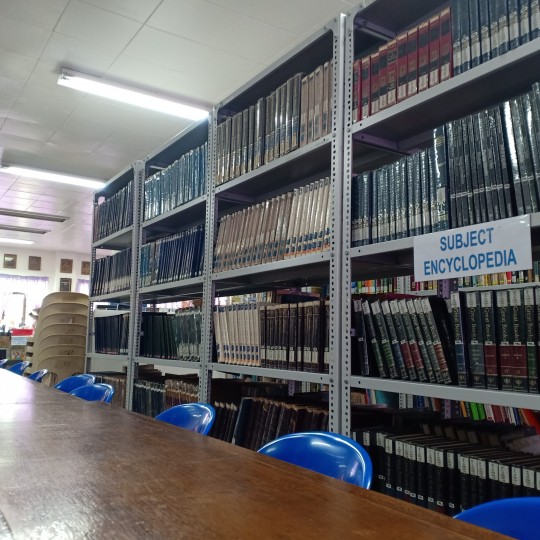

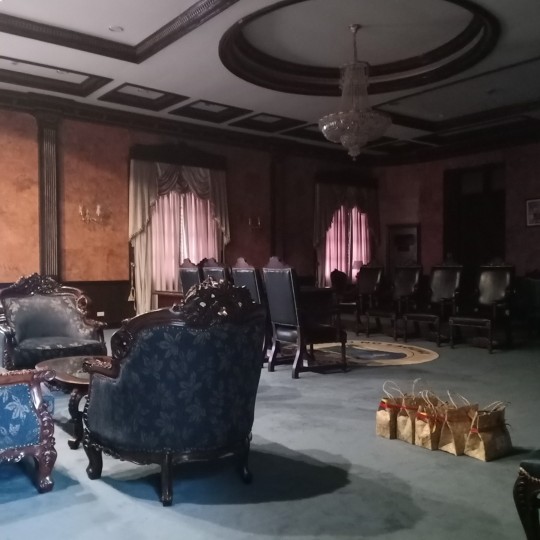

When in Santa Cruz
0 notes
Text
12 Pontes Espetaculares do Mundo/ 12 spektakuläre Brücken der Welt/12 spectacular bridges in the world
12 Pontes Espetaculares do Mundo/ 12 spektakuläre Brücken der Welt/12 spectacular bridges in the world
O vasto mundo é cheio de atrações surpreendentes. A evolução da engenharia proporcionou a possibilidade de se construir edifícios e pontes impressionantes. Sendo assim, Erich e eu, que somos interessados em conhecer lugares e construções espetaculares, listamos para vocês 10 pontes localizadas em diferentes pontos do globo. Vejam como elas são interessantes:
Helix Bridge,…

View On WordPress
#China;Khaju Bridge - Isfahan#China;Sidu River Bridge#Helix Bridge#Iran;Danyang-Kunshan Grand Bridge Jiangsu Province#Japan;Chengyang Wind and Rain Bridge Chengyang#Malaysia;Kintaikyo Bridge Iwakuni#Netherlands;Langkawi Sky Bridge Langkawi#Norway);Python Bridge Amsterdam#Singapore; Laguna Garzon Bridge#Uruguay;Golden Bridge (Ba Na Hills#Vietnam);The Twist (Jevnaker
0 notes
Text
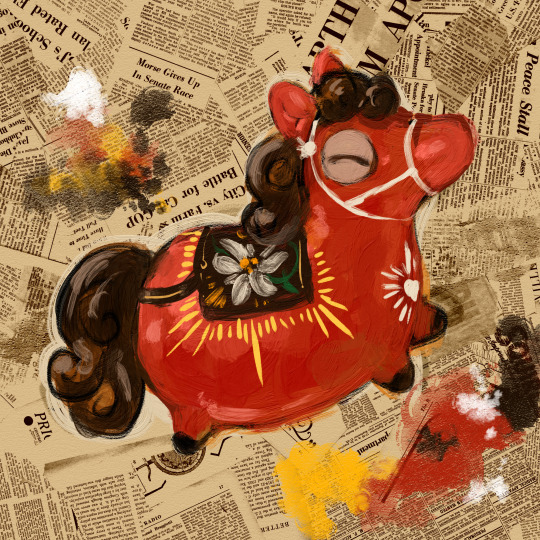
A Taka Paete Horse,
kinda sorta. I used my squishy horse proportions on it.
It's a paper mache handicraft from Laguna province in the Philippines. I dunno if they still sell DIY kits of these.
93 notes
·
View notes
Text
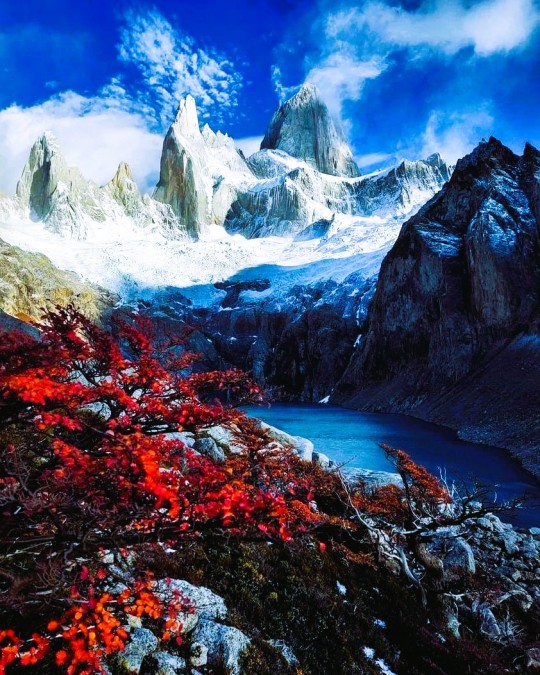
El Chalten, Santa Cruz Province, Argentina: El Chaltén is a small mountain village in Santa Cruz Province, Argentina. It is located on the riverside of Rio de las Vueltas, within the Los Glaciares National Park (section Reserva Nacional Zona Viedma) near the base of Cerro Torre and Cerro Fitz Roy spires, both popular for climbing. It is 220 km north of El Calafate. It is also a popular base for hiking numerous trails, such as those to the base of surrounding peaks and glacial lakes, such as Laguna Torre and Laguna de los Tres (near the base of Fitz Roy). Wikipedia
72 notes
·
View notes
Text
A fear of spiders, or arachnophobia, seems quite common around the world. Last year, a team of researchers published a global database showing the pervasiveness of arachnophobic sentiments in media based on their investigation of a decade of online newspaper coverage from over 80 countries. These fears remain even though less than 0.5 percent of spider species can actually harm humans through their venom, and most of these species live far from humans anyway.
But there are some exceptions—and my home country, the Philippines, is one of them.
One of the authors of the study, entomologist Aimee Lynn Barrion-Dupo, is also from the Philippines. In an interview, she explained that unlike most countries where spiders were depicted as sources of venom and harm, in the Philippines spiders figured in news reportage mostly as pets or as participants in the popular pastime of laro ng gagamba (literally “game of spiders”). The game involves catching spiders, taking care of them, and making them fight other spiders.
I know the game very well. When I was a child growing up in Laguna province in the Philippines, I played it with other kids in my neighborhood.
My father taught at the University of the Philippines Los Baños College of Forestry, which was located on Mount Makiling, some 60 kilometers away from Manila. Those of us who grew up on the slopes of the mountain would go into the forests to look for the fiercest, strongest, and most unique spiders. We would then house them in medicine bottles or matchboxes, and feed them ants, grasshoppers, and other insects—until it was time to play.
When two of us were ready to fight, we would place our spiders on the opposite ends of a stick of walis tingting, a kind of broom. Another person, who acted as a referee, was usually asked to hold the stick. Then, we’d nudge our spiders to walk toward one another and fight. The winner of the wrestling match was decided very quickly, sometimes within seconds or at most a few minutes. It ended when one of the spiders was killed or incapacitated, or when a spider either fell off the stick or tried to run away more than once.
We had names for the different spiders we commonly caught: gagambang botchog (round spider), gagambang pari (priest-like spider), gagambang ekis (spider with an X). Sometimes we would give them nicknames based on their appearances: gagambang pula (red spider) or Voltes V (after a Japanese anime character).
Could it be that this game desensitized us to spiders, making us less fearful of them in contrast to many other parts of the world?
This question interests me not just because of nostalgia for the spiders of my childhood but as an anthropologist who today explores human entanglements with other species. I’m fascinated by how we perceive and live with other creatures, including animals we pit against each other and play with—from cockfighting in Bali to bullfighting in Spain to cricket fighting in China.
When it comes to widespread fears surrounding spiders, a closer look reveals a more complicated picture of human responses and interactions with these creatures. The arachnologist David Wise, for instance, surveyed folk tales from North America to Africa that cast spiders in a positive light, leading him to conclude that not all societies are arachnophobic.
In the Philippines, a handful of scholarly accounts of laro ng gagamba depict people’s close relationships with spiders. Some of these detailed accounts remind me of my childhood days, while others go beyond my own experiences, showing how diverse and sophisticated the practice is across the country.
One example comes from an ethnographic account by cultural anthropologist Ty Matejowsky, who researched spider wrestling in Pangasinan province in Northern Luzon in the early 2000s. He recounts how boys and young men collect, train, and play with spiders, often for money. Although my experience of laro ng gagamba didn’t involve placing bets, Matejowsky sees the game as an entry point for many Filipinos into “gambling culture.” (He also presents the practice as exclusive to boys and men, but I remember playing it with neighbors who were girls.)
Matejowsky also details how players attempt to heal their spiders who may be hurt in battle. “As surprising as it may seem,” he notes, “steps can be taken to rehabilitate injured spiders for an eventual return to wrestling.” For instance, players place the leaves of ampalaya (bitter gourd), thought to have restorative properties, in the spider’s box for a few days before slowly resuming the regular diet of “insects and bits of meat and rice.”
Barrion-Dupo, with two biology colleagues, conducted a survey of 300 spider game players in Northern Mindanao from 2014 to 2015 that revealed more details of the practice. Gambling on laro ng gagamba matches, the investigators found at the time, could involve sums of up to 10,000 pesos (around US$180).
Fascinatingly, the researchers also recorded various substances people fed to the spiders to prepare for a fight. The list included various vitamins and supplements, dextrose, coconut water or meat, duck egg soup, Jujube plum fruit (Ziziphus jujuba), milk, honey, energy drinks, and even human breastmilk. The gamers usually placed these substances on cotton balls and left them in the boxes where the spiders were kept.
These details show that more than just a game, spider wrestling in the Philippines involves care and intimacy between humans and spiders. Matejowsky describes it as an “attachment … that approaches what some feel for more conventional pets.”
Today laro ng gagamba continues to be played in rural areas in some parts of the country. Barrion-Dupo sees the spider game as offering children “first steps in science and natural history,” ultimately contributing to an appreciation not just for spiders but for the environment at large.
However, the research by Barrion-Dupo and her colleagues also shows the game has a potentially detrimental impact on the populations of various spider species. Gamers usually extract mature reproductive females from the wild; female spiders, as it turns out, are more ferocious than their male counterparts. The researchers call for policies to restrict the game to prevent species decline.
As far as I know, spiders are not often included in animal rights discourses in the Philippines. (Matejowsky’s article noted spiders are considered “pests, not animals.”) However, these attitudes may change in the future; some people are already discussing the need to expand animal welfare concerns to include insects, spiders, and other invertebrates.
Even without active intervention, however, the game already seems to be declining in popularity.
When I recently returned to the neighborhood where I grew up, I was told that none of the kids ventured into the forests like my friends and I used to. During the pandemic, people were forbidden to go outdoors, and many public green spaces were off-limits for recreational activities. Plus, the advent of electronic gadgets and digital technologies has meant that children today, whether they live in urban neighborhoods or mountainous communities, are far more likely to be familiar with Spider-Man than the spiders that share their environments.
Regardless of the ultimate fate of laro ng gagamba, however, I hope our familiarity and fascination with spiders will continue.
89 notes
·
View notes
Text
Baby Hero was born with congenital adrenal hyperplasia (CAH), a condition that affects the production of hormones in his body. Having CAH makes Hero intersex, and the type of CAH he has requires lifetime medication.
The couple is also able to secure some financial help from the Department of Social Welfare and Development. But explaining her son’s condition to the personnel handling her requests is always a pain, as they often don’t understand what CAH is.
The plight of the intersex community rarely comes into the national spotlight. But one time it did was when the Supreme Court (SC) sided with Jeff Cagandahan in a 2008 landmark ruling that paved the way for the community’s rights.
In 2003, at a regional trial court (RTC) in Laguna, Jeff filed for changes in his birth certificate, namely the change of his name from “Jennifer” to “Jeff,” and his gender from “female” to “male.”
The RTC sided with Jeff, though the Office of the Solicitor General tried to reverse the decision. In the end, the SC upheld it, saying that Jeff let nature take its course in allowing his body to reveal male characteristics. He was allowed to change his name and gender in his birth registry.
“Respondent is the one who has to live with his intersex anatomy. To him belongs the human right to the pursuit of happiness and of health. Thus, to him should belong the primordial choice of what courses of action to take along the path of his sexual development and maturation,” the decision read, penned by the late former associate justice Leonardo Quisumbing.
Jeff later on co-founded Intersex Philippines, and currently serves as a co-chair of Intersex Asia. Intersex Philippines has over 200 members.
Though it’s been more than a decade since Jeff’s legal victory, the lack of public awareness about intersex people and their concerns generally remained in the Philippines, even among medical professionals.
For instance, while there are plenty of endocrinologists across the Philippine health system, Jeff said that it is difficult to find “intersex-friendly” endocrinologists, who do not push intersex people to undergo procedures to conform with the sex they were assigned at birth.
Access to medicine remains the biggest challenge for intersex people in the Philippines, according to Jeff. Based on their group’s research, just one specialty compounding pharmacy, Apotheca, produces the medicines that most in their community need. It’s Metro Manila-based, which makes it even harder for those in the provinces to access them.
Jeff constantly receives reports of children with life-threatening intersex variations who succumb to their condition, as their parents were unable to acquire the medications that could have kept them alive.
According to Intersex Philippines, some intersex children undergo irreversible, unnecessary surgeries and treatment without their consent. Some also experience emotional harm from this treatment.
In November 2023, Bataan 1st District Representative Geraldine Roman filed the Cagandahan Bill in Congress, which seeks to make what Jeff achieved more accessible to intersex Filipinos.
While Republic Act No. 9048, enacted in 2001, allows Filipinos to correct clerical and typographical errors in their civil registry offices without judicial orders, the bill said that this does not “explicitly address the unique circumstances of intersex individuals.” Having their legal documents amended to align with their identities would acknowledge an intersex person’s right to self-determination, it said.
2024 Apr. 6
7 notes
·
View notes
Text
i decided to unite my love for maps and for OT and make a map of the distribution of OT contestants from OT 2017 - 2023 in regards to their residence* because i find it so fascinating, like yeah it does kinda follow where major urban centers concentrate but also why is there so little people in valència? so many in iruña specifically? how is that outside madrid the only other OT contestant from castile is from guadalajara from all places???
*I followed the locations from the wikipedia page; in OT it's necessary to reside in spain but you don't need to have the spanish nationality to participate so i'll add the nationalities when needed!

below the cut i'll specify where each contestant is from, province by province, with pics of all the towns and cities !!!
A CORUÑA:
OT 2017: Pontedeume (Miriam Rodríguez), Santiago de Compostela (Roi Méndez)
OT 2018: As Pontes de García Rodríguez (Sabela Ramil)
OT 2020: Sada (Eva Barreiro)
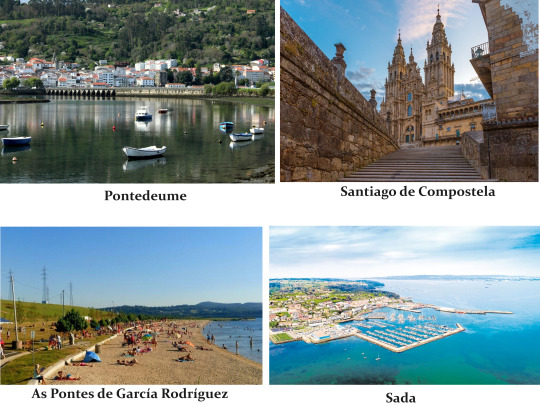
OURENSE:
OT 2017: Ourense (Luis Cepeda)

BIZKAIA:
OT 2017: Bilbo (Juan Antonio Cortés)
OT 2023: Getxo (Martin Urrutia)

NAFARROA:
OT 2017: Iruña (Amaia Romero)
OT 2018: Iruña (Natalia Lacunza)
OT 2020: Iruña (Anne Lukin, Maialen Gurbindo)
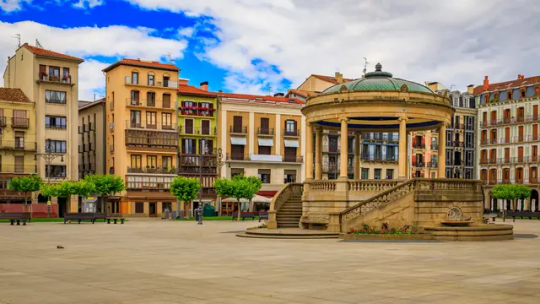
ZARAGOZA:
OT 2023: Zaragoza (Naiara Moreno), Magallón (Juanjo Bona)

TERUEL:
OT 2020: Alcañiz (Anaju Calavia)

BARCELONA:
OT 2017: Sant Climent de Llobregat (Aitana Ocaña), El Prat de Llobregat (Alfred García), Gavà (Nerea Rodríguez), Montgat (Raoul Vázquez), Terrassa (Miki Núñez)
OT 2018: Esplugues de Llobregat (Carlos Right)
OT 2020: Sant Cugat del Vallès (Nick Maylo), Sant Joan Despí (Ariadna Tortosa)
OT 2023: Vallirana (Lucas Curotto, he's Uruguayan)

ILLES BALEARS:
OT 2017: Palma (Ricky Merino)
OT 2018: Bunyola (Joan Garrido)
OT 2023: Ciutadella de Menorca (Chiara Oliver, she's half British)

GUADALAJARA:
OT 2023: Yunquera de Henares (Omar Samba, he's half Senegalese)
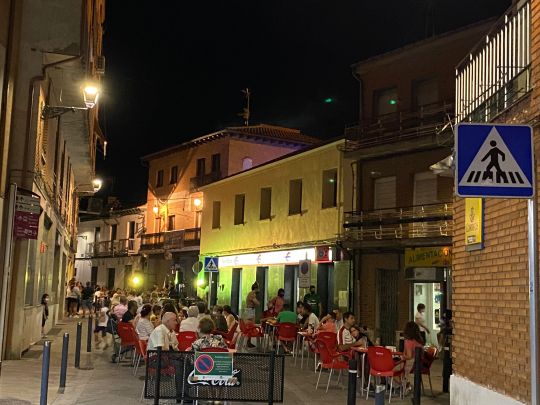
MADRID:
OT 2018: Madrid (María Villar, África Adalia, Alfonso La Cruz - he's Venezuelan)
OT 2020: Alcalá de Henares (Bruno Alves, he's Uruguayan)
OT 2023: San Fernando de Henares (Bea Fernández), Madrid (Ruslana Panchyshyna, she's Ukranian and has lived several years in the Canary Islands; in fact her accent is Canarian. I do not know which island / town and in the wikipedia page it listed her as a Madrid resident, that's why she's included here)

CÁCERES:
OT 2017: Malpartida de Plasencia (Thalía Garrido)
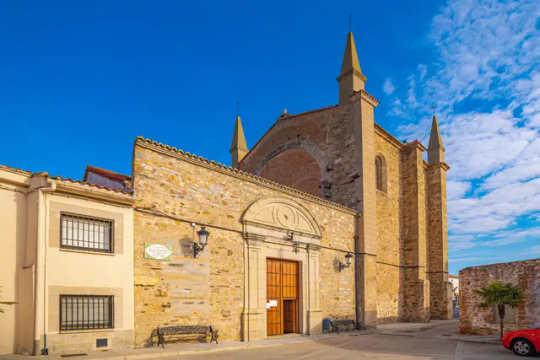
ALACANT:
OT 2018: Elx (Alba Reche)
OT 2020: Beniarrés (Samantha Gilabert)

MURCIA:
OT 2020: Murcia (Flavio Fernández)

GRANADA:
OT 2017: Huétor Tájar (Mimi Doblas)
OT 2023: Armilla (Paul Thin), Motril (Violeta Hódar), Ogíjares (Denna Ruiz)

MÁLAGA:
OT 2017: Alhaurín de la Torre (Mireya Bravo)
OT 2018: Torre del Mar (Marta Sango), Málaga (Noelia Franco)
OT 2023: Mijas (Salma Díaz)

CÓRDOBA:
OT 2020: Córdoba (Hugo Cobo), Adamuz (Rafa Romera)
OT 2023: Córdoba (Álex Márquez)
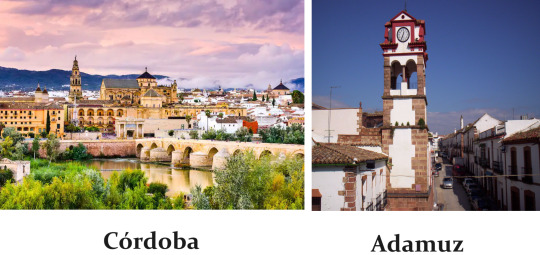
SEVILLA:
OT 2017: Dos Hermanas (Marina Rodríguez)
OT 2018: Bormujos (Famous Oberogo, he's Nigerian)
OT 2023: Sevilla (Álvaro Mayo)

CÁDIZ:
OT 2018: San Fernando (Julia Medina), Sanlúcar de Barrameda (Dave Zulueta)
OT 2020: Barbate (Jesús Rendón, Javy Ramírez)

CEUTA:
OT 2020: Ceuta (Gèrard Rodríguez)

LAS PALMAS:
OT 2018: Gáldar (Marilia Monzón)
OT 2020: Las Palmas de Gran Canaria (Eli Rosex, Nia Correia - she's half Cape Verdian)
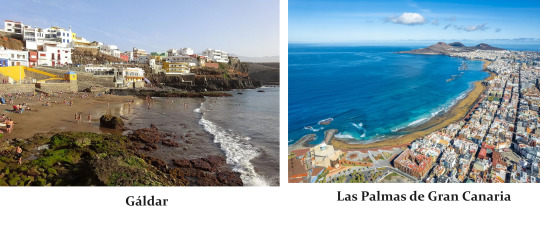
SANTA CRUZ DE TENERIFE:
OT 2017: San Cristóbal de La Laguna (Ana Guerra), Adeje (Agoney Hernández)
OT 2018: Adeje (Damion Frost, he's German)
OT 2023: San Cristóbal de La Laguna (Cris Bartolomé, he's half Equatorial Guinean), Santa Cruz de Tenerife (Suzete Correia, she's Sao Tomean)

#vivitalksot#spain#map#sorry for the mess in barcelona#i was trying to place the dots in more or less where the town was#but in the end it just looks bad. sorry :(
12 notes
·
View notes
Note
LITERALLY just saw Mom being Tagalog, nevermind, let me change the question into which province she/her family is from.
[Had to look up the correct terminology because I wasn't sure about the meaning of Tagalog (I thought it was just the name of the language), and not gonna lie, it felt familiar because we identify ourselves culturally the same way in my country— by which province our family, mostly mother's side, comes from, that is lol]
LMFAOOO sorry anon I just saw this right after answering your other ask 😭
She's from Laguna! And yeah, I know a lot of folks get confused about this, but Tagalog has always been an ethnic group too haha
Also!! A little spoiler that I don't mind sharing: the Daitans (her family) will have a more prominent role in the future 👀 not in Book 1 tho
#hollowed minds series#hollowed minds#elaine daitan#interactive fiction#wip#writing#ask#anon#hollowed minds book one#if wip#interactive novel
15 notes
·
View notes
Text
User's Profile

Full Name: Xu, Wuhan Siguel
Nicknames: Cig, Yuan
Birthday: March 7, 1997
Nationality: Korean-Chinese-Spanish
Status: In a relationship
Birthplace: Wuhan, China
Hometown: Seoul, SK
City: Laguna Province, Philippines
Age: 26
Zodiac Sign: Pisces ♓
MBTI: INFP
Family: Dad, Sibling (Younger)
DISCLAIMERS
To avoid conflicts, I'm clarifying that I'm not Xu Minghao and I am not affiliated to the said artist, even his agency and group. (HYBE, SEVENTEEN) He's used to portray the character I'm trying to convey, meaning all the events is all made up by the user's minds. Any concept, names, events, mentioned on my every blog related to real life is not intended and pure coincidence. All the photos were edited by yours truly and I don't want anyone taking them without my permission.
PLOT (!)
📹 CAREER 📸
___________________________
Wuhan Siguel (Martinez) Xu, also known as Yuan, is the singer-songwriter of the Hiwaga, the only all rounded band handled by Sin-Sagada. The 26-year-old lad rose to fame when he started doing acting projects at 9 years old with Keyeast Entertainment. He's a bright and enthusiastic child on camera, and he even has tons of modeling projects at the age of 15.
🖥️ EDUCATION 🎓
___________________________
The lad has decided to focus on his career, so he stopped in his sophomore year. He migrated to the Philippines to be his grandparents' companion at Laguna. He continued studying here and was in his fourth year of college, studying a Bachelor of Science in Computer Science with a Major in Software Technology at Adamson University, located in Manila. He is independently living alone until he finally gets a degree and now, he's one of the members who got chosen to be part of the band he's in.
🎤 DIS/LIKES 🥕
___________________________
Xu is half-Spanish, and half-Korean-Chinese, his mom is the Asian. At the age of 9, he is already fluent on speaking four languages (Korean, Chinese, Spanish, Japanese) and can speak five as of the moment. (Japanese, Thai, Tagalog) Despite the spotlight and all the huge crowds, he can never be used to the noise. Xu enjoys himself at peaceful places such as library, parks, and his studio alone. He can't eat soondaes, betamax, raw zucchini and carrots, exotic dishes, and all extremely sweet desserts other than that he eats anything.
⛳ HOBBY 📝
___________________________
He likes to travel a lot with friends, since he's a mixture of three nations he can't remove his curiousity to the world. Xu once mentioned in an interview that he's not a fan of sports but is very active at outdoor activities because of his boyfriend whose fond of golfing. Music is natural in his nature, he's a producer, a songwriter, and a singer.
4 notes
·
View notes
Text

#photography#catholic#holy week#maundy thursday#immaculate conception parish sta. cruz laguna#sta. cruz laguna#lagunaph#hometown#home province#visita iglesia 2023#pacf
1 note
·
View note
Text
Day 14: Legend
Part of my OC-tober 2022 (that will get fucking finished in 2024 so help me god)! I keep changing between Isabel Magbanua and Isabel Makiling but I swear! The official is Isabel Makiling. Magbanua was just Isabel’s last name in first drafts, so I got unconsciously attached. Uh. Anyway. Have some Lesbian heavy petting.
“In the province of Laguna, there is a mountain in the shape of a woman,” Isabel tells her, one night, her cheek against Margie’s bare chest, her thigh between Margie’s legs, all under the pretense of washing themselves of the day’s grime in a nearby stream. The water has long since carried the dirt and blood away, and now they’re just luxuriating in the cool shallows, warmed significantly by the heat of each other. “They say the mountain is guarded by a spirit—she used to be a goddess, before the Spaniards came. Dayang Makiling is what her people call her. The mountain is her domain, a reflection of her. From the right angle, you can see her body, laid upon her side.”
Her fingers, delicately tracing patterns along Margie’s skin, travel south. Goosebumps rise to meet it.
“The ground rises at her knees,” Isabel says, wandering hand disappearing under the surface of the water to caress the sensitive backs of Margie’s knee. Her body jumps in tandem to it, like a marionette come to life, at the call of her puppeteer. Or guitar strings, vibrating under the musician’s skillful touch. Singing, like Margie sings now, gasping as Isabel drags her hand up, up, up—
“Then, the slope forms her thighs,” Isabel says, fingers on Margie's inner thigh, so close. So dangerously close—
So suddenly gone. Margie whimpers, pathetically, at the loss of contact, but is not disappointed for long, as the leg that she had forgotten about, shifts, until Isa’s thigh is pressed flush to the heat of her. Margie grinds down against it, desperately, whimpers turning into whines, uninhibited. Unashamed. Even when Isa laughs at her desperation. Even when her hand still ventures up, up, up, over the soft rolls of fat around Margie’s waist, stopping to pinch and feel and sink into the meat of it. Isabel has stopped talking for the time being, so focused is she on the twists and turns of Margie’s face, dark brown eyes nearly black with want. Margie can hardly look at her when she is like this, but forces herself to, begging without words for more.
“Then, her breasts,” says the girl, as her fingers catch on the swell of Margie’s chest. “Ample. They form twin peaks, near the end. If you look closely, you might even see—”
She pinches a nipple between two fingers. Gives it a rough tug.
“Isa,” Margie whimpers, finally finding her voice and her strength. With a quick maneuver, she flips them over, pining Isabel against the bank with a frustrated groan. “Fuckin’ hell, Isa.”
With a flick of their hips, their cores slot together in hot, sparking bliss. Bodies cradling each other so close, not even water can come between them.
"Dayang Makiling," Margie says, with her atrocious accent. Still, Isabel shivers in anticipation, their twin breaths lost in the space between their lips, mouths hanging open in a brief pause. "Isabel."
Isabel grins up at her, long, thick hair a halo of black floating around her pretty head, the rest of her barely shrouded in a liquid tapestry of moon silver. Beautiful. Regal. Just like how Margie had begun to imagine it, soaring through the clouds and looking down upon a mountain, its Lady on her back, smiling at the sky.
--
Note: Though the folk lore of Maria/Dayan Makiling is location specific to the province of Laguna, Philippines, this story itself doesn’t really take place in Laguna, but instead in Bulacan, which is in the North. Isabel’s family is from Laguna, and moved to Manila before the siege, and that’s why she’s familiar with the story of Mt. Makiling.
#stella's oc-tober 2022#estrella_marie#margie sanchez#isabel makiling#people like us#i am very bad at writing sex so this cuts off very abruptly i am sorry#just know that they are fucking in a stream and it's glorious
4 notes
·
View notes
Photo
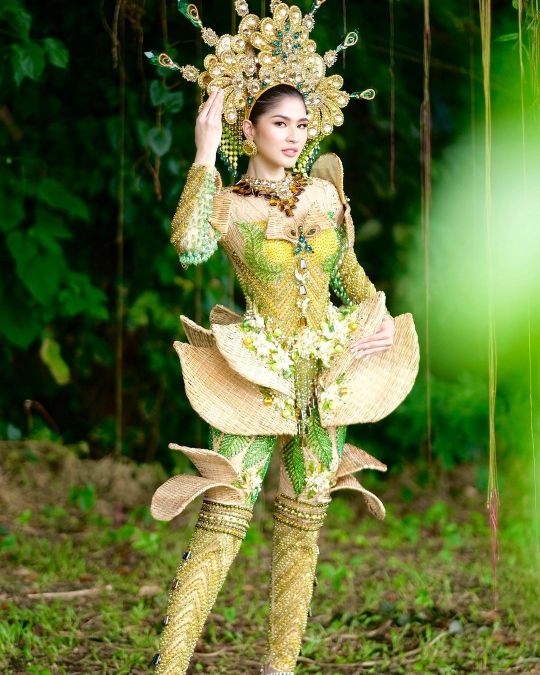
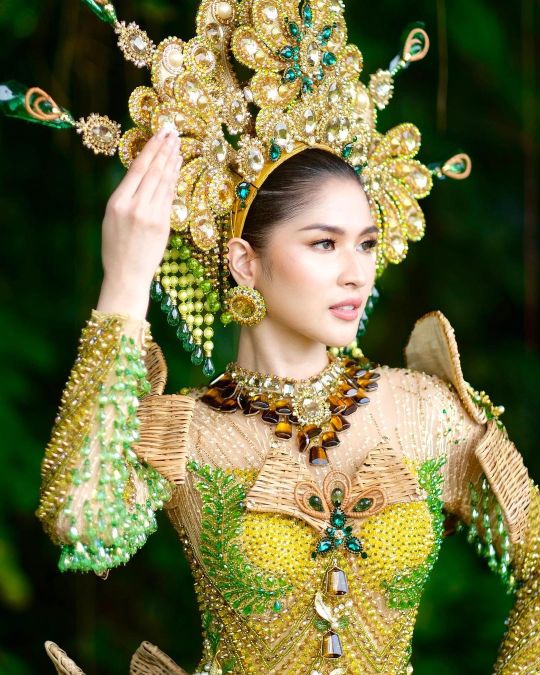
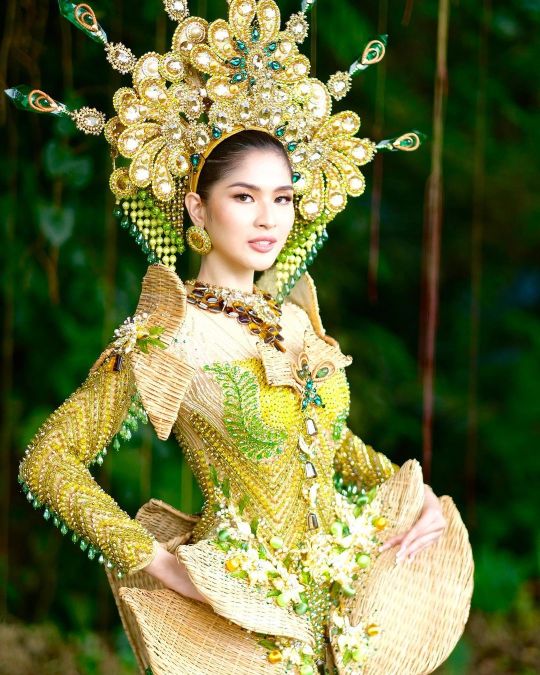
Binibining Philippines 2022 National Costume Contest- Laguna
Maria ng Makiling is a breathtakingly beautiful deity in Laguna that protects the animals, forest, and the crops that surround it. With the help of the youth in Laguna, the elements in this costume incorporate the different culture and traditions of Laguna. Through the modern interpretation of this costume, we hope to relive the legend that accords honor to the majestic province of Laguna.
113 notes
·
View notes
Text


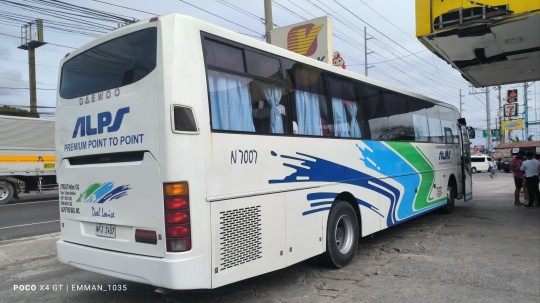
Batangueño Premium
ALPS The Bus, Inc. N7007 "Doel Louise"
Chassis Manufacturer: Zyle Daewoo Bus Corp.
Chassis Model: Daewoo BH117H (PL5UR)
Engine Manufacturer: Doosan Infracore
Engine Model: Doosan DL08K Euro 5
Coach Manufacturer: Santarosa Motorworks Inc.
Coach Model: SR Cityliner
Engine Location: Rear
Seating Configuration: 2x2
Seating Capacity: 45 passengers + 1 driver + 1 conductor with CR
Type of Service: Public Utility Bus (PUB)
Type of Operation: Provincial Operation (P2P)
Classification: Deluxe Airconditioned Bus (AC)
Route: Cubao (Quezon City) - Batangas City (Batangas Province) via Alabang (Muntinlupa City), Ortigas (Pasig City)
Franchise Route: Ortigas (Pasig City) - Batangas City (Batangas Province) via SLEX
Transmission: M/T
Suspension: Air Suspension
Shot Location: Flying V Turbina, Pan-Philippine Highway, Brgy. Turbina, Calamba City, Laguna
Date Taken: March 15, 2024
NOTE: Errors may be evident with this description. Corrections will be done once verified.
2 notes
·
View notes
Text
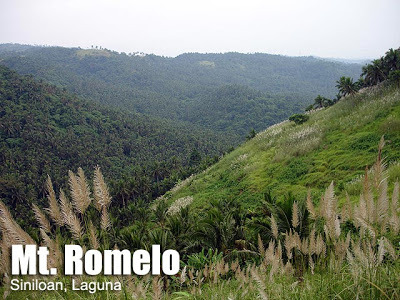
Siniloan, Laguna
Major Jump-off: Brgy. Macatad, Upland Siniloan
Elevation: 300 MASL
Days required / hours to summit: 1 day, 2-3 hours
Specs: Minor Climb, Difficulty 2/9, Trail Class 1
Features: Waterfalls, rain forest
Mt. Romelo is one of the most visited mountains in Laguna province, It offers several waterfalls and breathtaking views of the Southern Luzon region. Mt. Romelo rises 984 feet or 300 meters above sea level. Despite having a lower elevation than other mountains in Southern Luzon, this peak has become a popular weekend destination for hikers of all skill levels. In the past, Mt. Romelo was also referred to as Mt. Kapaynutan and Mt. Famy.
Mt. Romelo consists of seven waterfalls namely Buruwisan Falls, Lanzones Falls, Batya-Batya Falls, Sampaloc Falls, Sapang-Labo Falls, Binaytuan Falls, and Diwata Falls. The famed Buruwisan Falls, which rise to a height of roughly 55 meters, is the tallest and largest of the seven waterfalls. The hardwood mixture that used to grow on the banks of the Siniloan River, it was claimed, is how the falls got their name. In contrast, Lanzones Falls, which is encircled by woods, is only 21 meters above sea level. The well-known Buruwisan Falls, which rise to a height of roughly 55 meters, is the tallest and largest of the seven waterfalls. The hardwood mixture that used to grow on the banks of the Siniloan River, it was claimed, is how the falls got their name. In contrast, Lanzones Falls, which is encircled by woods, is only 21 meters above sea level.
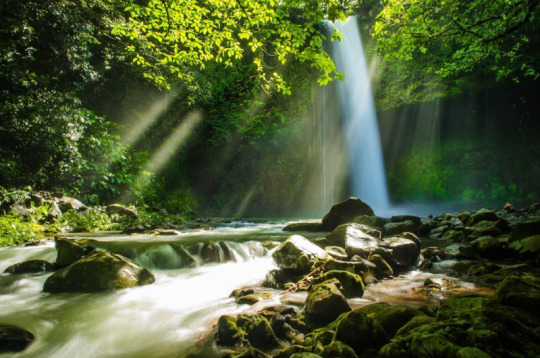
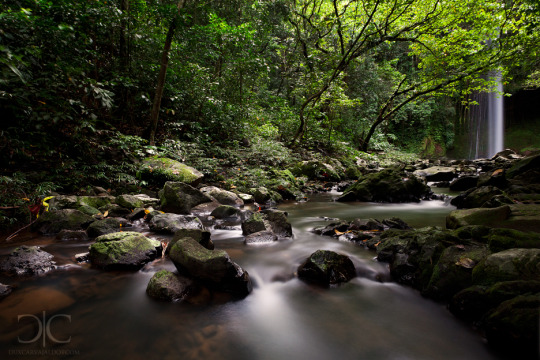


#Mt. Romelo#Hiking#Trail#Waterfalls#fresh water#Burisan Falls#Batya-Batya Falls#Lanzones Falls#Sampaloc Falls#Sapang-Labo Falls#Binaytuan Falls#Diwata Falls
17 notes
·
View notes